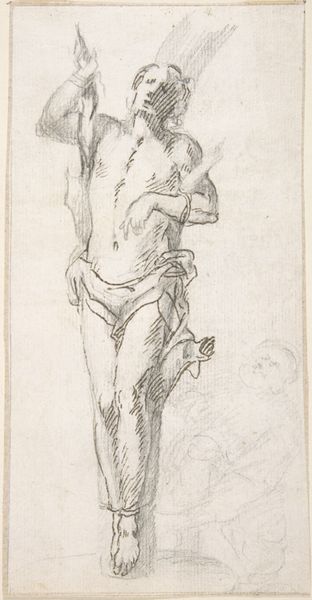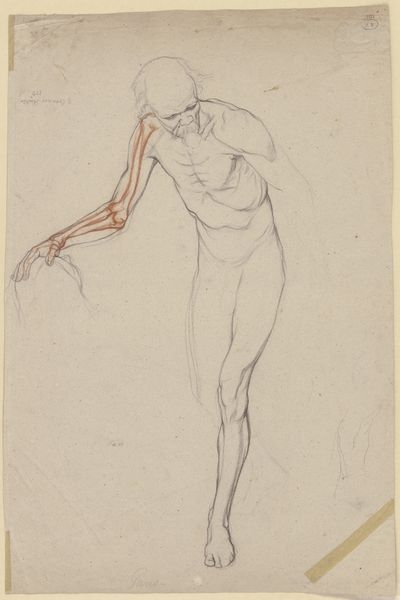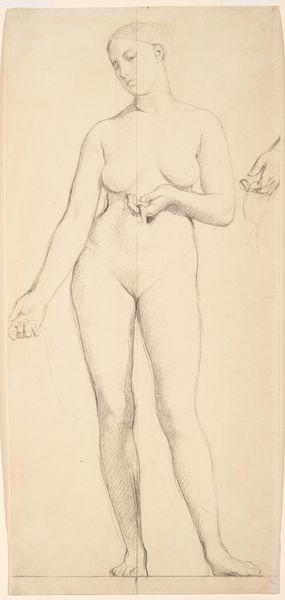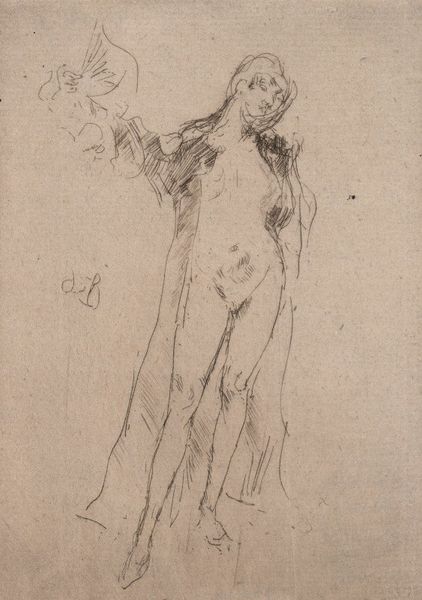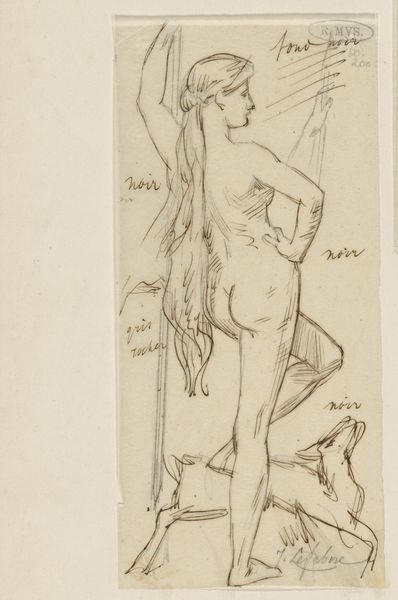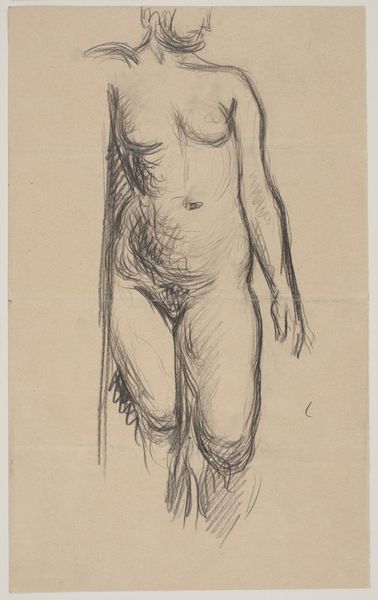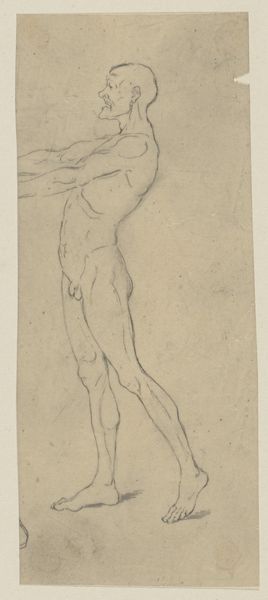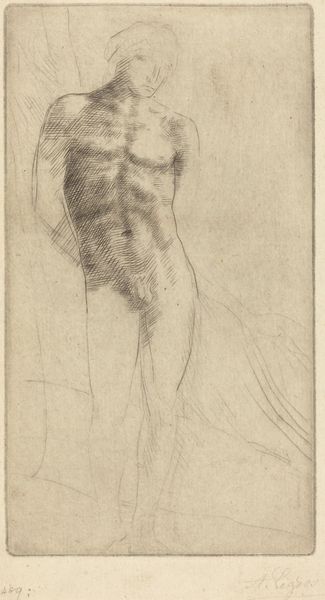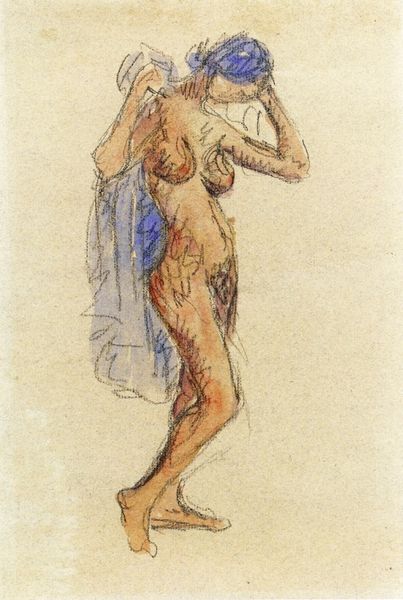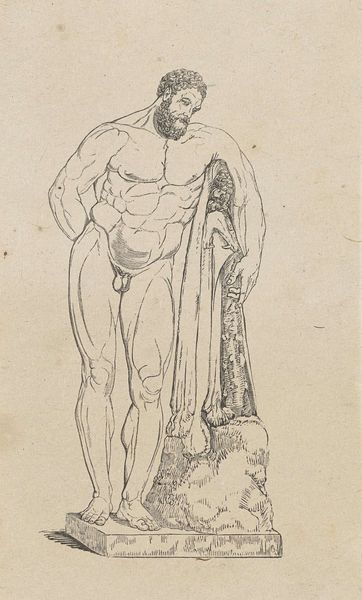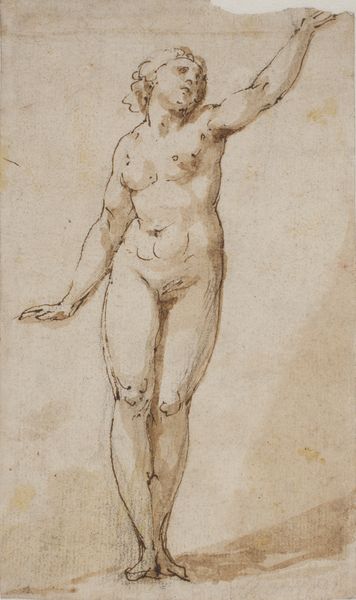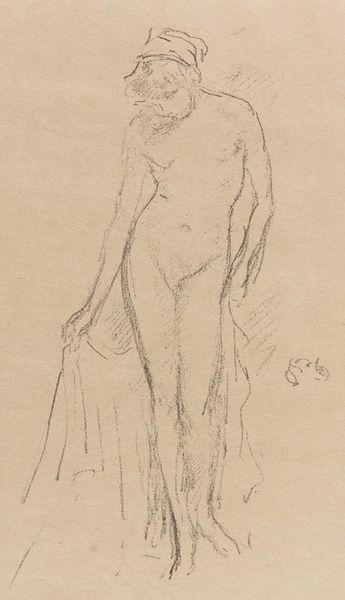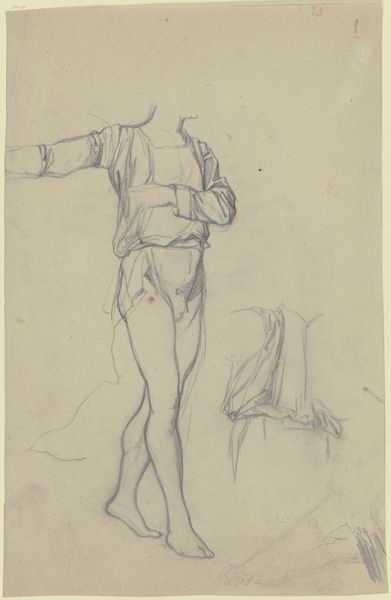
drawing, pencil
#
portrait
#
drawing
#
figuration
#
pencil drawing
#
sketch
#
pencil
#
expressionism
#
portrait drawing
Dimensions: 42 x 21.2 cm
Copyright: Public domain
Curator: Looking at this pencil drawing, "Standing draped figure" dating back to 1913, by Ferdinand Hodler. It's a portrait sketch, a figure draped rather simply. Editor: It has such an evocative mood. It’s as though the artist captured this figure in the briefest of moments, on the precipice of motion. There's a sense of incompleteness that is quite arresting. I’m curious, why only pencil? Curator: Well, Hodler was intensely interested in material efficiency and the economic conditions of artistic production. Pencil was easily accessible, offered him control over line and shading. We might consider the paper itself - its availability, cost and how that might reflect early 20th century social considerations. This wasn’t a study for a painting, but perhaps for mass-produced prints accessible to working-class people, and the materiality would greatly shape it. Editor: Hmm. Interesting. Though the line work seems raw, not meant for prints necessarily. It really pulls me into a vulnerable, unguarded place. The sketch feels urgent. Those rapidly applied pencil strokes give it such a striking emotional intensity that you wouldn’t see in academic figure studies. Do you think Hodler intentionally gave her so much presence, but stripped her of identity by not including facial features? It gives a universality to her figure. Curator: The absence of the face definitely shifts focus from individual to archetypal form. Hodler might have considered the role of academic artistic conventions of representation, subverting these traditions through reductive form to create a critical space for the viewer. A rejection, perhaps, of consumerist driven figuration, as Hodler tried to make more ‘honest’ art. Editor: That raw application feels almost defiant to me, like Hodler wrestled with traditional ideals and liberated himself from that rigid expectation by putting the essence of this woman on paper in one fell swoop. Curator: These materials were far more cost effective to do that than, say, sculpting or even painting! Editor: Indeed. It also feels more accessible. I leave now with an enriched perception, looking beyond medium towards the intentions of the piece itself. Curator: And perhaps Hodler might prompt us to contemplate both how we produce art, and the implications. Thank you!
Comments
No comments
Be the first to comment and join the conversation on the ultimate creative platform.
